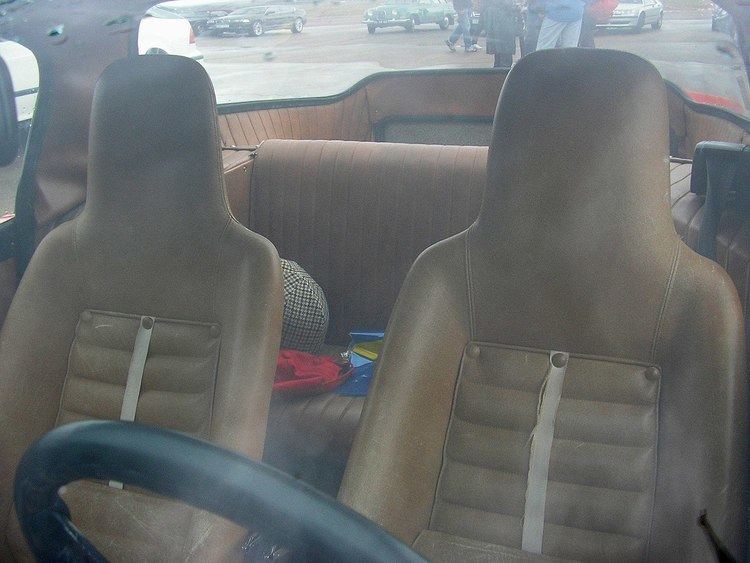 | ||
In car classification, 2+2 is a configuration with seating for the driver and one passenger in the front plus two smaller seats for occasional passengers (or children) in the rear.
Contents
Description
A 2+2 has just two rear seats rather than the more common three. Reasons for this may include a car's more sporty nature, typical low roof line, wide wheel arches, and (because of being front engined with rear-wheel drive or four-wheel drive) wide central transmission tunnels, the last of these being the most pressing problem for a third (middle) seat. For example, the Porsche 911 is a rear engined, rear wheel drive, so it lacks a large transmission tunnel, but loses space in the rear due to its wheel arches, reducing the space to 2 passengers.
Space in the rear is most noticeably absent in terms of longitudinal leg-room. This is again often due to the low roof line, and other elements of body styling, in addition to large engine compartments and sometimes also large areas given over to the convertible roof in the case of a 2+2 convertible.
Many vehicles may fall into the definition, and there is no official body offering a strict definition, but cars called 2+2s must have:
and also strongly tend to have:
Many convertible, targa top and hatchback cars are strictly within this definition, but are rarely deemed 2+2s. Few cars have ever been specifically marketed as 2+2s—most often this is to distinguish them from a 2-seat open version of the same model. Prominent are the classic Jaguar E-type fixed-head coupé 2+2, the Lotus Elan 2+2, the Nissan 300ZX 2+2, the Chevrolet Monza 2+2, the 1965-66 Mustang 2+2 and the Pontiac 2+2 models, including the aerodynamic Grand Prix of NASCAR fame.
Variations
The TVR Cerbera has its front passenger seated slightly forward to allow more room for a passenger in the back, as well as having very large side doors to make access to the rear seats easier. This configuration is unofficially known as a "3+1".
The Mazda RX-8 has two small "half-length" rear suicide doors to make access to the back seats easier. Note that, in this case, "2+2" still refers to the seating layout and in no way to the additional 2 "half-length" rear doors.
The 1965 and 1966 Mustang Fastback was marketed as the "Mustang 2+2", because it came with, as standard equipment, a fold-down rear seat. The car even had chrome fender emblems "MUSTANG 2+2" in the location where other body styles had a plain "MUSTANG" emblem. In 1967, the seat became optional, and the "2+2" designation was dropped.
